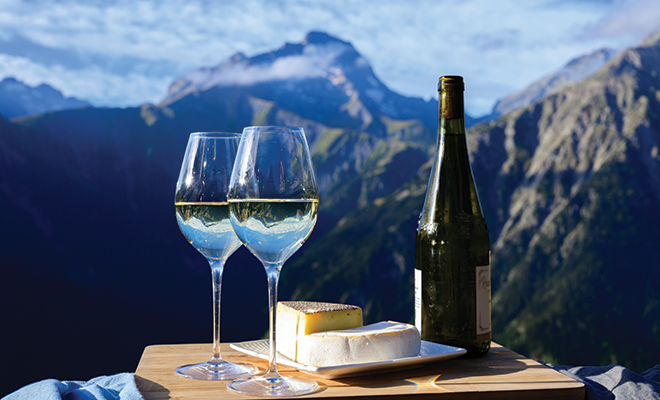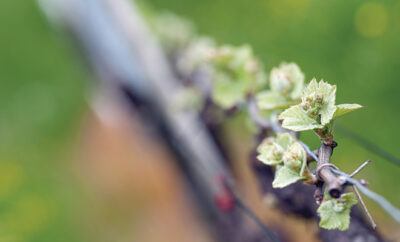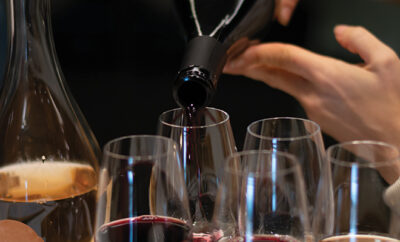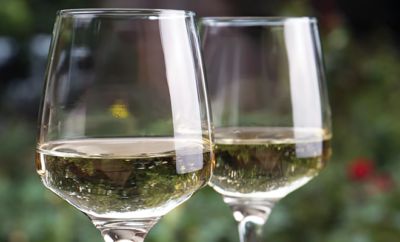
Tasting Wine without Pulling the Cork
Have you been saving that bottle of wine you received for the holidays because, well, you’ve never heard of it, or it’s a varietal you’ve never tried, or it’s a wine that just doesn’t sound like “your thing”? What if the wine label looks incredibly ornate and fancy and you’d rather just not open the bottle for fear that you’ll “ruin” it?
When you look at your wine label, it lists some very specific things, such as where the wine came from, where the grapes came from, when the grapes were harvested and what type of grape went into that little bottle you’re holding in your hand. Whether the label appears fancy or looks like your seven-year-old drew it with chalk, you’ll soon have a trick up your sleeve to enhance your own wine enjoyment and that of those around you.
Knowing the taste structure of a wine can help us pair it perfectly with any of the delicious foods that we enjoy this time of year. In fact, this fun exercise might cause you to invite your friends over to see who can pick out the most flavors in your group’s wine selection.
Every wine has a varietal that is the primary type of grape in that wine. Zinfandel, for example, is a specific grape varietal that may be bottled as a zinfandel-red wine blend. That wine blend could contain another grape varietal such as Cabernet Sauvignon or another wine, called a winemaker’s blend. So how do we taste this bottle of wine without pulling the cork?
Go to your kitchen! And while you’re at it, go to your potting shed as well. We’re going to pull a few things from your surroundings that you can arrange on your kitchen counter to get a sense for how that wine tastes.
Each grape varietal contains both a “usual” profile in the balance of the senses we use to enjoy wine, such as taste, smell and sight, to begin with and specific characteristics you can become familiar with before you open that bottle. Although where that grape is grown has additional influences on the flavor, there are some helpful things to look for. Why? Because the zinfandel grape is grown in many different regions, and those regions have unique rainfall, sunlight, temperature and altitude.
Our example, zinfandel, is one of my favorites. Your refrigerator, spice cabinet and herb garden are about to help you taste one of the world’s interesting varietals. If your garden or produce drawer has fresh beets, potato, fig, bell pepper or mushrooms, place them on the counter. Now pull out the spices of clove, anise, black pepper, white pepper and sage; if you have canned beets, jams such as plum, raspberry or blueberry, a sharp cheddar cheese and a cutting board, we’ll have some fun tasting zinfandel.
Place your produce on the cutting board and arrange your spices, jams and cheese alongside your cutting board. As you pick up each piece of produce, slice off just a taste to take in the aroma and really note for yourself how the fresh beet and the mushroom smell. Earthy? Musty? Like dirt? How about your cheddar cheese? Does it smell like yeast or bread?
If your cutting board is made of cedar or walnut, sprinkle some of your gathered spices, such as the clove and black pepper, onto the board and dip the fresh beet and mushroom pieces in it. Take in another smell; you can nearly imagine these very different scents coming together in a wine called zinfandel. But there’s one more step.
How does the smell make you feel? Wine is a sensual thing, not just with taste and smell. When the aroma of the rich soil from the potato and the beet blend with the warmth of clove and black pepper with ripe plum jam, it might make you hunger for the romance of an ocean breeze and bonfire, or perhaps a time of summer thunderstorms with the lingering hint of electricity in the air.
For every varietal of wine, your kitchen, garden, first aid kit and even your garage can share some taste secrets that will help you on your journey to enjoying many wines without pulling the cork, making you the expert to your friends, family and coworkers.
Thank you for playing along with show and tell from your own kitchen! I hope you enjoy zinfandel, along with all the other beautiful still wine and sparkling wine varietals you have yet to experience. Cheers! ■
Sources: gfawine.com.







